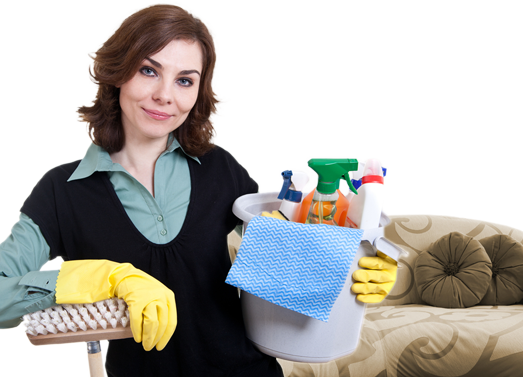Revive Your Velvet Curtains: Safe Washing Practices
Posted on 03/06/2025
Revive Your Velvet Curtains: Safe Washing Practices
Velvet curtains bring a sense of luxury and warmth to any room. Their plush texture and sophisticated appearance make them a popular choice for homeowners seeking elegance and comfort. However, to preserve their beauty, regular and careful cleaning is crucial. Improper washing can damage the fabric, leading to fading, warping, or loss of texture. In this comprehensive guide, we'll explore safe washing practices for velvet curtains, expert tips for maintenance, and insider tricks to revive velvet curtains effectively and safely.

Why Special Care is Essential for Velvet Curtains
Velvet is not your average textile. Its unique pile weave gives it a signature gloss and touchable softness, but also makes it more vulnerable to abrasion, moisture, and harsh chemicals. If treated incorrectly, velvet curtains can become flattened, streaked, or mottled. That's why washing velvet curtains safely is about more than just removing dust; it's about preserving their rich look and longevity.
- Moisture sensitivity - Velvet can absorb water quickly, possibly weakening fibers and encouraging shrinkage if not managed properly.
- Pile distortion - Improper cleaning can crush the fabric's pile, making curtains appear dull or uneven.
- Color fading - Velvet dyes are often delicate, so harsh chemicals or excessive sunlight during drying can cause fading.
- Stain set-in - Delay or incorrect stain removal can leave permanent marks on velvet curtains.
Identifying Your Velvet Type
Before delving into specific curtain cleaning techniques, it's important to identify your curtain's velvet type. Not all velvets are made equally. The fibers and construction determine how best to clean your curtains:
- Cotton velvet - Luxurious and classic, but can shrink or deform if soaked or exposed to excessive heat.
- Synthetic velvet (polyester, rayon, nylon) - More resilient and often machine-washable, but always check care instructions.
- Silk velvet - Delicate, often requires only professional dry cleaning.
- Crushed or embossed velvet - This velvet features unique imprints. Avoid any process that could flatten or mar the texture.
Tip: If you're unsure about the fabric type, consult the manufacturer's tag or seek advice from a professional dry cleaner.
Pre-Washing Velvet Curtains: Preparation Steps
Jumping straight into cleaning could cause more harm than good. Proper preparation will protect your velvet drapes during washing and boost their life expectancy. Follow these important steps:
- Read the care label - Always start by reviewing the curtain care tag for any special washing instructions or warnings (such as "Dry Clean Only").
- Remove hardware - Take off hooks, rings, or curtain weights. Metal parts can damage both the fabric and your washing machine.
- Shake off dust - Gently shake your curtains outside or use a soft brush to remove surface dust and debris.
- Vacuum using an upholstery attachment - This can help keep pile fibers standing and looking fresh before washing.
- Spot test a hidden area - Dab a mild detergent and water solution on a less visible corner. Check for color bleeding, shrinkage, or pile distortion.
How to Wash Velvet Curtains: Step-By-Step Safe Methods
Hand-Washing Velvet Curtains
Hand-washing is often considered the safest way for reviving velvet curtains, especially for cotton or mixed-fiber velvets. Here's how to wash velvet curtains by hand:
- Fill a tub with cool water - Never use hot water, as it may cause shrinkage or affect the glue used in backing certain velvet curtain fabrics.
- Add a small amount of mild detergent - Choose a gentle, liquid detergent formulated for delicate fabrics. Avoid bleach and fabric softener.
- Immerse the curtain - Submerge the curtain fully, gently agitating the water to lift soil. Don't rub or scrub the fabric, since friction could flatten the pile.
- Soak for no more than 15 minutes - Prolonged exposure is unnecessary and may damage fibers.
- Rinse thoroughly - Drain the soapy water and refill with clean water. Gently swish to remove all suds.
- Press out excess water - Never wring or twist the curtain. Instead, press it between two towels to remove moisture.
Machine Washing Velvet Curtains
Some synthetic velvet curtains are safe for machine washing, provided you tread carefully. Here's how to do it:
- Use a mesh laundry bag - Place each panel in a separate mesh bag to protect edges and prevent tangling.
- Choose the delicate or gentle cycle - Always wash velvet curtains separately from heavier items.
- Wash in cold water - Hot water can cause pile damage or shrinkage.
- Add gentle detergent - Use the smallest amount needed for a clean wash.
- Skip the spin cycle - A high-speed spin can distort the curtain's shape and flatten the velvet.
Pro Tip: For best results, limit machine washing to synthetic fabrics. When in doubt, hand-wash or consult a professional cleaner.
Treating Stains on Velvet Curtains
Fast action is essential for tackling spills or stains on your velvet drapes. Here's a safe stain removal routine for velvet:
- Blot gently - do not rub. Use a dry, absorbent towel to dab the stain. Rubbing drives the spill deeper and damages the pile.
- Mix a mild cleaning solution. Combine a few drops of gentle dish detergent in a cup of cool water.
- Dab the stain with a clean cloth. Touch only the affected area--avoid soaking the entire panel.
- Rinse and blot dry. Using a fresh, damp cloth, remove any suds. Press--never rub--until the area is as dry as possible.
- Allow to air dry completely. Do not apply heat or direct sunlight.
If the stain persists or for oil-based spills, contact a professional velvet curtain cleaner to avoid fabric damage.
Drying Velvet Curtains Correctly
Proper drying is a vital step in restoring velvet curtains after washing. Incorrect drying can crush the fabric's pile or result in unsightly lines and wrinkles.
- Never wring or twist velvet curtains--even after hand-washing. This damages fibers and distorts the panel's shape.
- Lay flat on towels - Place curtains flat on absorbent, clean towels. Roll gently to lift out water, or press with a second towel.
- Hang to dry in a ventilated area - Drape curtains over a rod or clothesline away from direct sunlight. Sun can fade velvet and cause stiffening.
- Use a padded hanger if possible, to avoid creases where fabric folds over a thin rod.
Important: Avoid tumble drying. The heat and tumbling action can permanently damage the delicate pile and lining of velvet curtains.
Restoring Velvet's Pile After Washing
Once fully dry, your velvet curtains' pile may need some attention. If the nap appears flattened or crumpled, here's how you can restore the lush look:
- Gently brush the pile - Use a soft, clean clothes brush or lint roller, brushing in the direction of the nap.
- Use steam - not ironing - Hold a garment steamer nearby and let warm steam relax creases. Avoid direct contact, as pressing the pile flattens it.
- Finger fluff - For small wrinkles, lightly fluff the pile with clean fingers.
Never use a hot iron or apply heavy objects on velvet to speed up the drying or smoothing process. This will crush the delicate velvet nap, leaving marks.
Professional Cleaning: When to Seek Expert Help
Some situations require the expertise of professional curtain cleaners, such as:
- Lined or interlined curtains that can't tolerate water immersion.
- Large, heavy drapes that are hard to handle at home.
- Silk velvet or antique velvet curtains, which are extremely sensitive to both water and pressure.
- Stubborn stains (red wine, oil, ink) that resist regular treatments.
Professional dry cleaners use specialized equipment and solvents to clean velvet drapes safely without risking their appearance or integrity.
Ongoing Care: Tips to Keep Velvet Curtains Vibrant
After reviving your velvet curtains, make your effort last by maintaining them regularly. Here's how to keep your curtains beautiful between washings:
- Vacuum every few weeks with a soft brush attachment to lift dust and freshen pile.
- Rotate curtains every few months, especially if they are exposed to sunlight, to ensure even fading (if any).
- Avoid direct sunlight as much as possible by using blinds or UV-blocking window films.
- Avoid spraying air fresheners or cleaners near the fabric, as these can leave residues or stains.
- Address stains immediately for the best chance of full removal.

Frequently Asked Questions About Washing Velvet Curtains
1. Can I use a dryer to speed up the drying process?
No. The agitation and heat of a tumble dryer can damage or permanently crush velvet's pile. Always air-dry the curtains.
2. How often should velvet curtains be washed?
Only wash velvet curtains when necessary. Frequent vacuuming and spot cleaning are preferable. Full washing may only be needed yearly, unless stains occur.
3. What detergent should I use for velvet?
Choose a mild, liquid detergent formulated for delicate items. Avoid bleach, whitening agents, or anything abrasive.
4. Why is my velvet curtain looking wrinkled after washing?
This can happen if the fabric was not laid flat or was left bunched up to dry. Steaming and gentle brushing typically return the nap to its original state.
5. Is dry cleaning always the best option?
For silk or antique velvet, yes. For modern synthetic velvets, handwashing is usually safe, but always check the care label first.
Conclusion: Bringing Your Velvet Curtains Back to Life
Caring for velvet curtains doesn't have to be intimidating. By understanding the unique needs of velvet fabric and following these safe washing practices, you can revitalize your velvet curtains and keep them looking luxurious for years. Remember the golden rules: check your curtain's label, be gentle, avoid wringing or harsh chemicals, and always air-dry. With a little care and these expert cleaning tips, your opulent drapes will continue to elevate your home's ambiance long after their first big wash.
Ready to give your space a fresh, opulent look? Start today by reviving your velvet curtains the safe and proper way!




